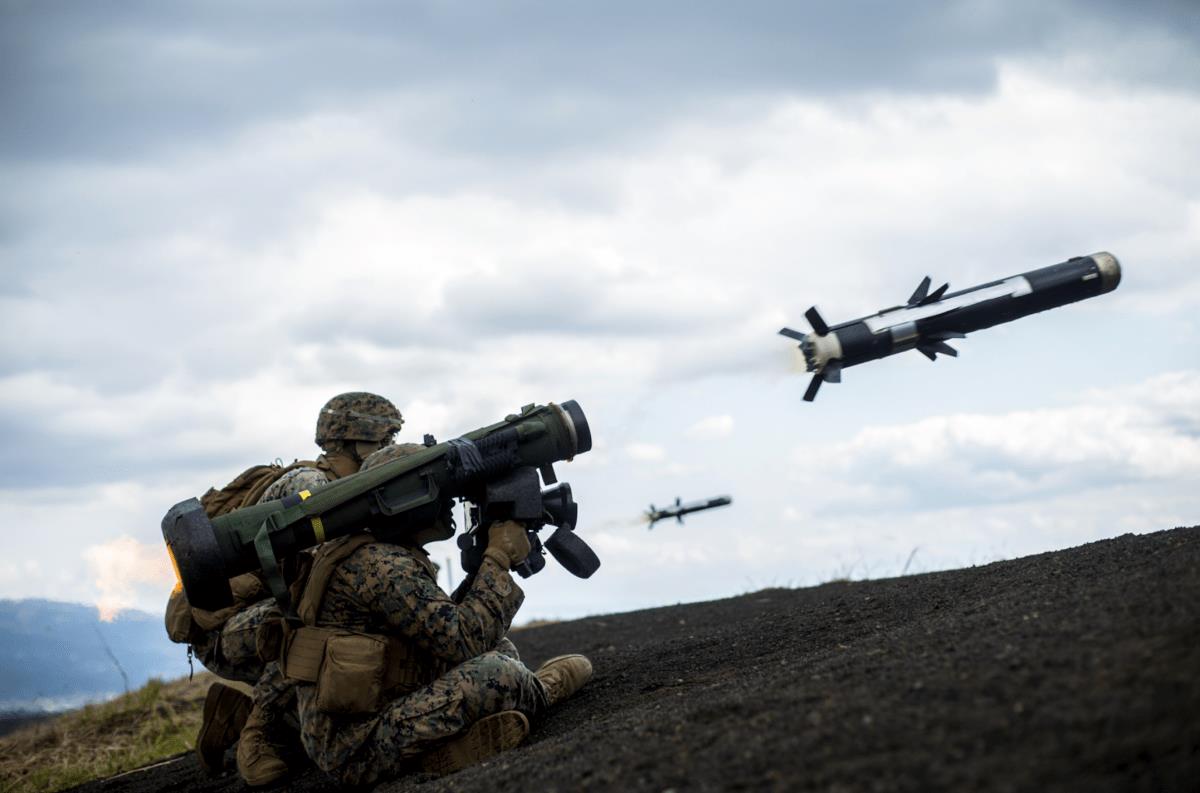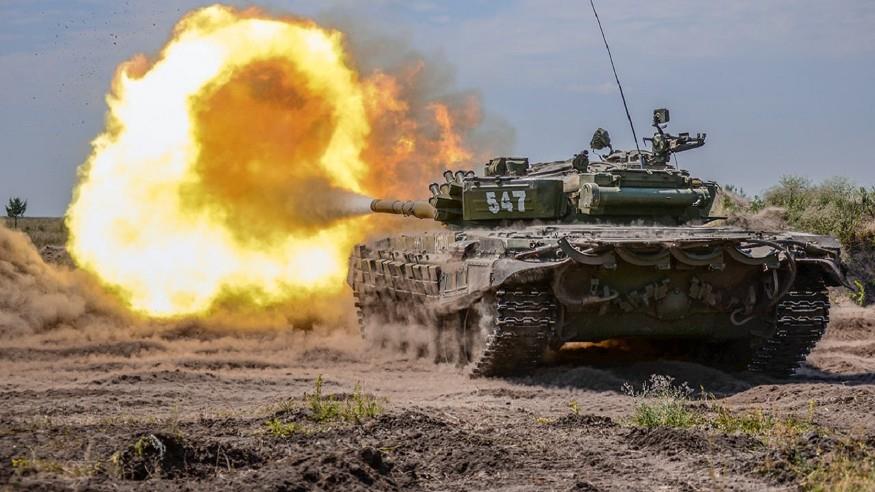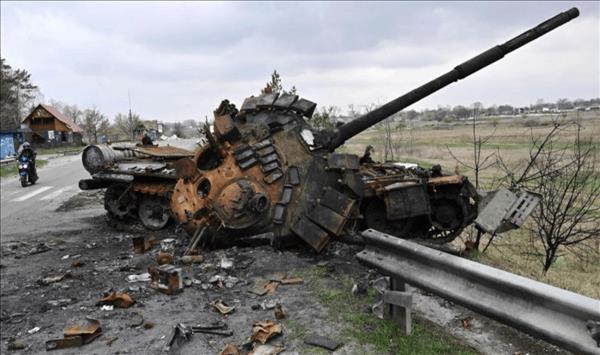
Does Ukraine Herald End Of Tank Warfare? Not Yet
While estimates differ, Russia has lost around 1,000 tanks in Ukraine since its invasion on February 24, according to the Oryx database . There are no reliable figures on how many tanks the Ukrainians have lost, but it would be significantly fewer because they have been used in more limited ways during the war.
Some analysts think the Ukraine war spells the end of tank warfare altogether. Others see this as a triumph for superior tactics using modern portable anti-tank weapons, particularly the US Javelin and the Swedish-British NLAW (New-generation Light Anti-tank Weapon).
Many Russian tanks have fallen to well-executed ambushes by foot soldiers using NLAWs, Javelins and other man-portable weapons, leading to criticism of Russian armor operations and tactics.
Interestingly, it was the Russians who pioneered the combat use of anti-tank weaponry when, in the 1973 Yom Kippur War, the Egyptian Army made heavy use of Russian Sagger anti-tank weapons. While Israel's hard-pressed tank crews worked to knock out Saggers, the Egyptians used RPG-7 anti-tank rockets with which a soldier could blast a tank at very close range.
After the 1973 war, the US led the way in developing tanks with more sophisticated armor. The most important breakthrough was Chobham armor , a steel-ceramic matrix between standard armor plates designed to absorb the shock of anti-tank weapons. The US Abrams M1 and the British Chieftain adopted this armor, and it was improved over time.
Russia followed developments in the UK and the US with its own composite armor called Combination K . It was inserted between layers of steel, like Chobham armor. It is said to consist of fiberglass/plastic and ceramics in three layers.
Combination K was used in some of the production of T-72s. Russia improved composite armor for its T-90A tanks, which are said to have successfully stopped RPG (rocket-propelled grenade) anti-tank weapons in the Chechnya war .
Reactive armorTo offset new types of armor, there were two key developments. One was better anti-tank weapons, and the other was reactive armor. In Ukraine, neither has been good enough to protect Russian tanks from destruction.
Russia has developed at least three different types of explosive reactive armor (ERA). Reactive armor uses insensitive explosive plates that deflect the trajectory of anti-tank rounds so that they lose energy and fail to penetrate armor.
Many of the T-72 tanks in Ukraine have reactive armor, mainly on the frontal hull and some on the side skirts. But reactive armor does not protect the tank turret, and neither does composite armor, which has limited use in turrets.
Russian tanks used in Ukraine are mostly fitted with Kontakt-5 ERA, a second-generation reactive armor. One tank model, the T-72 B3M , is fitted with a third-generation reactive armor called Relikt . Despite this upgrade, Russia has already lost more than 100 T-72 B3M tanks in Ukraine.

A Javelin missile during a live-fire combat rehearsal by US troops at Camp Fuji, Japan, April 12, 2021. Photo: WikiCommons / Marine Corps Lance Corporal Jonathan Willcox
There are other systems on Russian and Western tanks that try to deflect anti-tank weapons. For example, Russian tanks can create a smokescreen when an incoming round is detected, but this only works if the tanks have a radar or other system to detect a threat and the system is capable of releasing smoke soon enough to confuse the sensor on an anti-tank weapon.
Another technique is to try to jam anti-tank systems electronically or optically, but this has limited value.
Active systemsThe truly effective approach are known as active protection systems (APS). An APS detects an incoming threat and fires off an explosively formed projectile (EFP) to destroy it. To achieve APS, a tank or other vehicle needs to have suitable radar coverage, launchers for its EFPs and fast computers.
In the best system fielded today, Israel's Trophy APS , not only is the incoming threat destroyed but the system is able to locate the shooter and direct the tank's weapons to attack the shooter. The Trophy APS is deployed in the Israel Defense Forces, in Germany for its Leopard 2 tanks and in the US for the Abrams tank.
The Trophy system is designed not to harm infantry working behind or around the tank. As the Trophy works 360 degrees around the tank, including overhead, it protects the turret, probably the most vulnerable part of any tank.
Systems like the Javelin are designed to pop up and hit a tank from above, blasting the turret. The NLAW is designed to explode over the turret, exploding downward. As far as is known, there are no tanks used by Russia in Ukraine with active defense systems.
Russia has in the past designed at least three APSs, but none of them have been adopted by its army. Its third-generation system, called Arena-M , comes closest on paper to the Trophy, although it lacks the modern radar and computing capabilities of the Trophy and is not integrated in the tank's fire-control system.
Despite Russia flogging the system for export – its main effort was to try to sell the system to South Korea – Arena has found no foreign buyers. (South Korea apparently decided to design its own APS.) Russia claims to have a new APS for its T-14 Armata main battle tank named Afganit . From available descriptions, it covers 300 degrees around the tank (not the rear).
Restricted fundingIt is difficult to understand why Russian tanks in Ukraine were not fitted with APS. While Afganit is still not in production or fully tested, Arena has been around for more than a decade but never ordered.
It seems Russia was willing to invest in research and development but not in serial production, perhaps because it lacked funds to buy the system for its tanks, especially the T-72.

A Russian T-72 tank fires its main armament, Photo: Wikimedia Commons
The T-72 tank was selected by Russia for mass production because it was half the price of the T-80 , which is a more capable tank.
It takes many years for armies to adopt new weapons, especially armored vehicles. The US Army, for example, only this month funded the acquisition of Trophy kits for Abrams tanks, selecting General Dynamics to purchase the kits and sensors from DRS, partnered with Rafael in Israel.
Russia has two major constraints. The first is the lack of a suitable home industrial base to produce sophisticated weapons that need high-end electronics. The second is lack of funding. A good example is the Russian decision (during the Soviet period) to procure T-72s because they were cheap but not necessarily effective.
But today the Russians really no longer have a choice. Russia will have to rebuild its armor capability and will need to make its tanks survivable against modern anti-tank weapons. Will Russia go ahead with the super-expensive T-14 Armata tank, which is not yet in serial production, or find another alternative that is more affordable but also survivable?
The tank, if equipped with APS, is still needed for combat and brings massive power to any fight, provided it is used correctly and can survive against enemy firepower. The lesson for Russia is to modernize its armor. The same lesson applies to all other modern armed forces.
Follow Stephen Bryen on Twitter @stevebryen

Legal Disclaimer:
MENAFN provides the information “as is” without warranty of any kind. We do not accept any responsibility or liability for the accuracy, content, images, videos, licenses, completeness, legality, or reliability of the information contained in this article. If you have any complaints or copyright issues related to this article, kindly contact the provider above.






















Comments
No comment